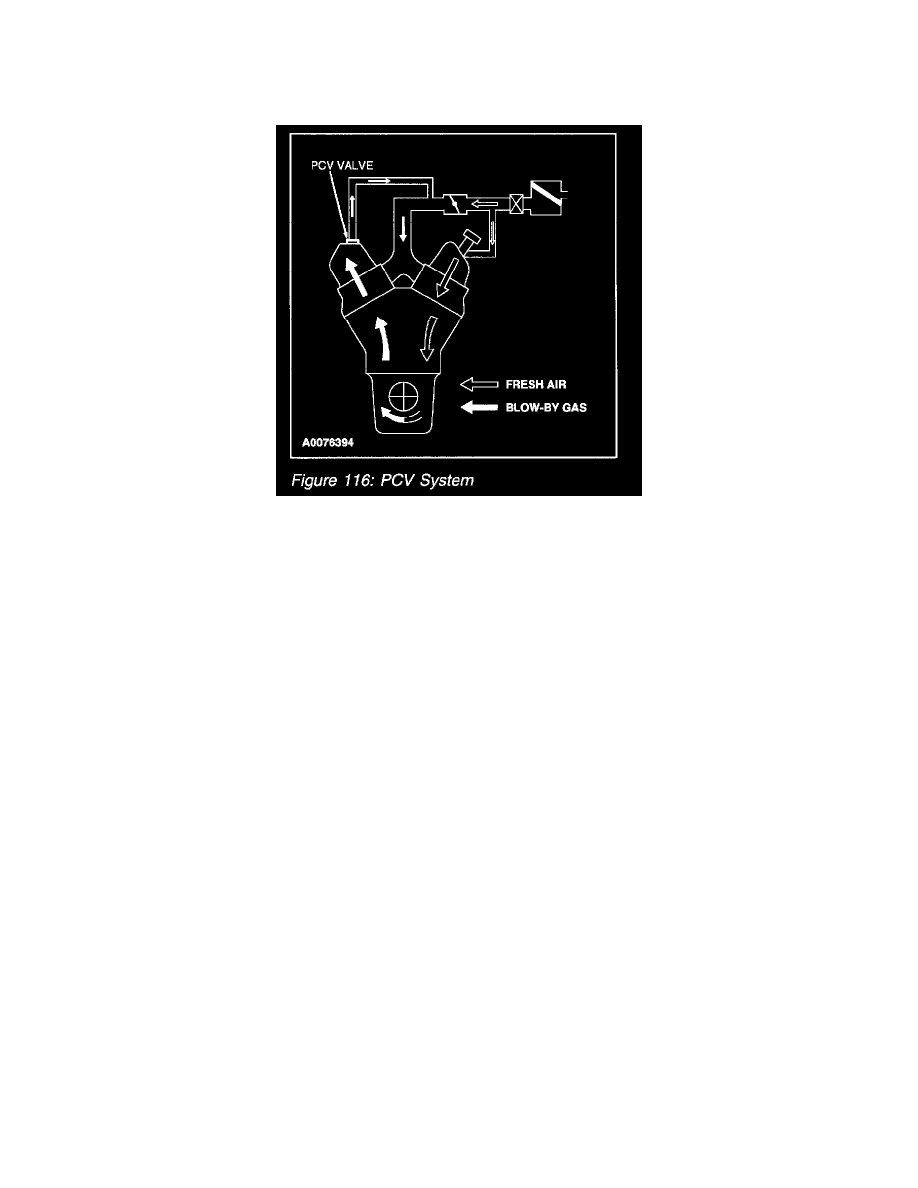F 150 Heritage 2WD Pickup V8-4.6L SOHC VIN W (2004)

Positive Crankcase Ventilation: Description and Operation
POSITIVE CRANKCASE VENTILATION SYSTEM
Overview
PCV System
The Positive Crankcase Ventilation (PCV) System (Figure 116) cycles crankcase gases back through the induction system into the engine where they
are burned. The PCV valve regulates the amount of ventilated air and blow-by gases to the intake manifold and prevents backfire from traveling into
the crankcase.
Currently, Ford uses heated and non-heated PCV valves. The purpose of the PCV heater is to prevent the PCV valve from freezing in cold ambient
temperatures. Heated PCV valves are heated either by water or electric. Water heated systems use engine coolant to heat the valve to prevent freezing.
Electrically heated systems use a heating element enclosed in the PCV valve to prevent the valve from freezing. Ford currently uses two types of
electrically heated PCV valve systems:
-
Thermal harness controlled - On vehicle application that are equipped with a thermal harness to the PCV valve. The thermal harness only provides
electrical continuity to the heating element when temperature are less than 40°F (5°C +/- 7°F (+/- 4°C)). Typically this harness is located close to
the PCV valve.
-
PCM heater controlled - On these applications the PCV heater is turned on by the PCM. When the intake air temperature is less than 32°F (0°C)
the PCM grounds the Positive Crankcase Ventilation Valve Heater Control (PCVHC) circuit and turns the heater ON. When the intake air
temperature exceeds 48°F (9°C) the heater is turned OFF. The PCV heater is also OFF when the engine is not running to prevent unnecessary
battery drain. The heater is also OFF if the vehicle charging system is above 16 volts. This minimizes heater element overload.
Refer to the figures for examples of these types of PCV valves.
NOTE: PCV systems that comply with OBD PCV monitoring requirements will use a quarter-turn cam-lock thread design at one end to prevent
accidental disconnection from the rocker cover. For more information about the PCV monitor refer to PCV System Monitor.
CAUTION: Do not remove the PCV system from the engine. Removal of the PCV system will adversely affect the fuel economy and engine
ventilation and result in shorter engine life.
Hardware
